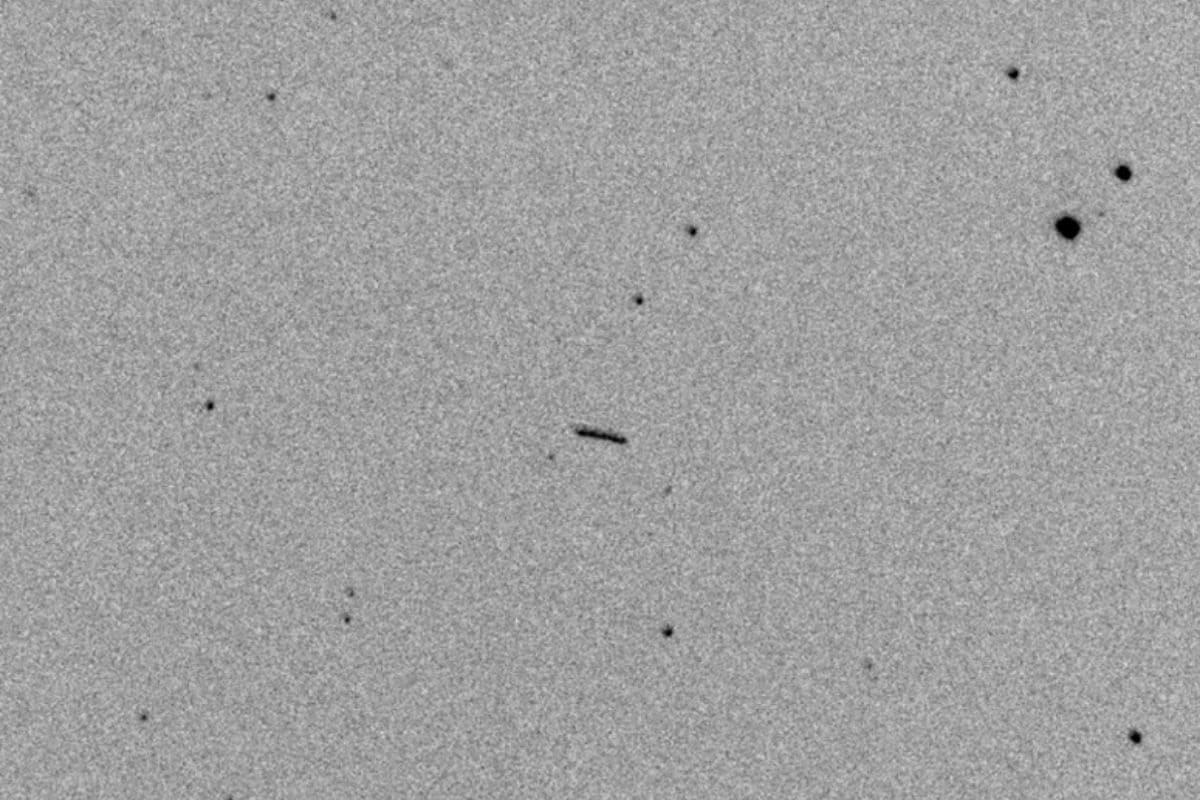

It is only the fifth space rock discovered prior to its collision with Earth’s atmosphere.
Late last week, astronomer Krisztián Sárneczky spotted a bright, fast-moving, new object in the night sky. Although the chance that the space rock would hit Earth was less than one percent at the time, follow-up observations proved a collision inevitable. Shortly afterwards, the space rock, which has been given the name ‘2022 EB5’, burned up in our atmosphere. It is only the fifth space rock discovered prior to its collision.
2022 EB5
2022 EB5 turned out to be small in size. The space rock had a diameter of about one meter and therefore posed no threat to Earth. Space rocks of this caliber burn up completely in the Earth’s atmosphere. Ultimately, 2022 EB5 entered our atmosphere about 140 kilometers south of Jan Mayen — a Norwegian volcanic island in the Arctic Ocean — less than two hours after its discovery.

Predicted place and time of impact. Image: ESA
Unfortunately, due to its remoteness, there are currently no convincing images of the bright fireball that 2022 EB5 most likely transformed into as it hit our atmosphere. Still, researchers are pretty sure that the impact occurred. Telling signals were detected in Iceland and Greenland, for example, suggesting that as much energy was released as an earthquake measuring 4.0 on the Richter scale.
Fifth Space Stone
The detection of 2022 EB5 is very special. Most asteroids that hit Earth were discovered many (millions) years after impact. About 200 known craters on Earth tell an impressive story about how our planet – and life – was formed by violent collisions with space rocks. Rarely is an asteroid discovered before it hits. 2022 EB5 is just the fifth. Moreover, it is also the first to be observed from Europe.
Why we have only discovered five asteroids before impact so far? The answer to that question is quite reassuring. Large asteroids – think of specimens several kilometers in diameter – are easier to spot. Fortunately, while these space rocks can do a lot of damage, they are relatively rare. It is estimated that astronomers have now identified and mapped about 90% of all near-Earth objects larger than a kilometer. As a result, we now know that no asteroids currently known pose a serious threat to Earth for the next 100 years.
Search for the little ones
The big challenge now is to map as many smaller asteroids (up to a size of about 140 meters) as possible. These are, as you can imagine, quite difficult to detect unless they are very close to Earth. All five space rocks spotted so far before their impact have been discovered since 2008. This means that observation techniques have improved greatly in recent years, enabling us to bring even the smallest to light.
In the future, no nearer to Earth may be able to escape our eyes. ESA will soon start building the state-of-the-art Flyeye telescope. This new telescope will closely scan the sky for asteroids that may pose a threat to Earth. The telescope does this by dividing each image into 16 smaller ‘sub-images’, increasing the total field of view. This extremely wide field of view from the new telescope will allow scientists to map a large portion of the night sky in just one night. And this greatly increases the chance of a lying space rock coming into our sights.
Source material:
†Fifth asteroid ever discovered before impact” – ESA
Image at the top of this article: ESA